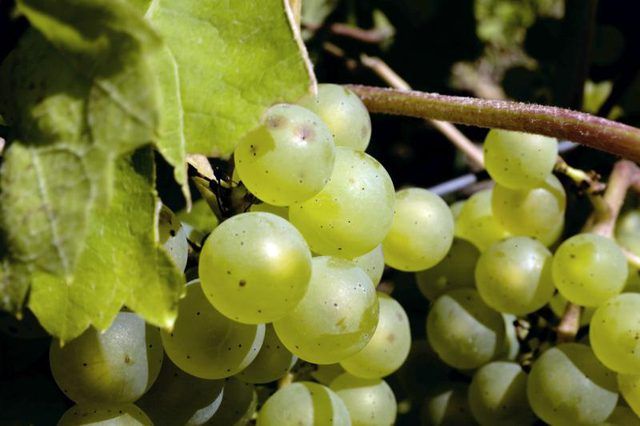Bulbs
Flower Basics
Flower Beds & Specialty Gardens
Flower Garden
Garden Furniture
Garden Gnomes
Garden Seeds
Garden Sheds
Garden Statues
Garden Tools & Supplies
Gardening Basics
Green & Organic
Groundcovers & Vines
Growing Annuals
Growing Basil
Growing Beans
Growing Berries
Growing Blueberries
Growing Cactus
Growing Corn
Growing Cotton
Growing Edibles
Growing Flowers
Growing Garlic
Growing Grapes
Growing Grass
Growing Herbs
Growing Jasmine
Growing Mint
Growing Mushrooms
Orchids
Growing Peanuts
Growing Perennials
Growing Plants
Growing Rosemary
Growing Roses
Growing Strawberries
Growing Sunflowers
Growing Thyme
Growing Tomatoes
Growing Tulips
Growing Vegetables
Herb Basics
Herb Garden
Indoor Growing
Landscaping Basics
Landscaping Patios
Landscaping Plants
Landscaping Shrubs
Landscaping Trees
Landscaping Walks & Pathways
Lawn Basics
Lawn Maintenance
Lawn Mowers
Lawn Ornaments
Lawn Planting
Lawn Tools
Outdoor Growing
Overall Landscape Planning
Pests, Weeds & Problems
Plant Basics
Rock Garden
Rose Garden
Shrubs
Soil
Specialty Gardens
Trees
Vegetable Garden
Yard Maintenance
How to Graft Grape Vines
How to Graft Grape Vines. Grafting grape vines (Vitis spp) together can either give a desirable vine resistance to pests, or allow a vineyard owner to restart a vineyard by growing a new cultivar on an established root system that already has disease and pest resistance. The vine that is rooted in the ground is the rootstock, and the vine that will...

Grafting grape vines (Vitis spp) together can either give a desirable vine resistance to pests, or allow a vineyard owner to restart a vineyard by growing a new cultivar on an established root system that already has disease and pest resistance. The vine that is rooted in the ground is the rootstock, and the vine that will fruit is called the scion. Grafting creates wounds on both rootstock and scion, which are fastened together so that as the wounds heal, the rootstock and scion join to become one plant. Grafting requires a sharp knife, grafting compound to seal in moisture, and grafting tape to keep the graft stable until the wound heals. Depending on species, grape varieties are hardy in U.S. Department of Agriculture zones 3 to 10.
Collecting Scion Wood
Cut scion wood from its parent vine during the winter while it is dormant; the University of California advises waiting as long as possible in the dormant season but before the buds begin to open. Scions should be about a pencil's width in diameter and require only one or two buds to be successful. If the scion has been exposed to diseases or pests, give the cuttings a water bath at 122 degrees Fahrenheit for 30 minutes to stop growth of fungi and pests, then rinse them in cold water. Wrap the scions in moist newspaper or wood shavings for storage, and seal them in plastic bags to retain the moisture. Keep the scions dormant by storing them at temperatures above freezing, but below 39 degrees Fahrenheit. If kept below 36 degrees Fahrenheit, the scions will store successfully for several months.
Cleft Grafting
Cleft grafting is the least-difficult grafting method that provides regular success. It is done in April and is used with larger rootstock that is over 3/4-inch in diameter. Cut the top of the rootstock off less than 30 minutes before grafting occurs. Use a knife or wedge to create a v-shaped cleft in the center of the rootstock. Shave the bottom of the scion on two sides so that it tapers to approximately 1/16-inch. Place one or two scions in the cleft so that the cambium layer of both scion and rootstock are in contact. Use grafting compound to seal the rest of the exposed wound, and tape the scion in place so that it cannot move.
Whip Grafting
Whip grafting is used on younger rootstocks that are less than 3/4-inch in diameter. The scion should closely match the size of the rootstock for best results. Whip grafting can be performed in March, since the younger wood will begin its growth phase earlier. Cut both rootstock and scion into a diagonal wedge of the same angle and length, approximately 2 inches long. Carefully match up the cambium layers of rootstock and scion, then securely fasten them together and seal with grafting tape so that the two pieces cannot move relative to each other and no moisture can escape. Watch the graft as it grows to ensure the tape breaks off and does not girdle the vine.
T-budding
T-budding, or shield budding, uses only a single, mature bud from the dormant scion wood. It is performed during the growing season while the sap is flowing and the bark is easily cut and peeled back from the rootstock. On the day of grafting, remove the leaf blades from the dormant scion, but leave the stalk that attaches the leaf to the branch intact. Shave a single bud and a small sliver of underlying wood from the scion. The cut should start 1/2-inch below the bud and end 1/2-inch above the bud. Cut a T-shape into the bark of the rootstock and peel the flaps of bark back far enough to allow the bud to be inserted. If needed, trim the top of the bud chip so it will fit in the T-shaped pocket on the rootstock, and bind the graft tightly in place, leaving only the bud exposed.